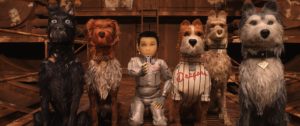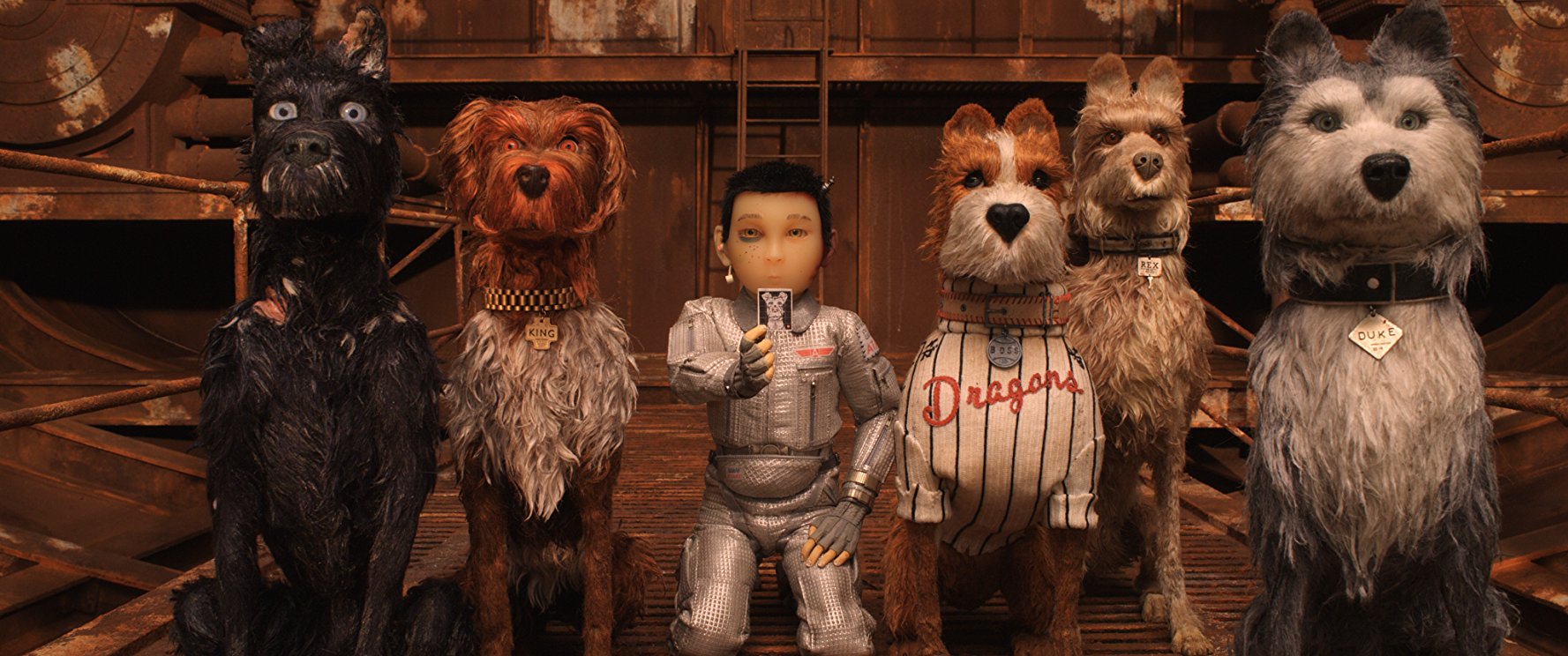Movie Info
Movie Info
- Rating
- PG-13
VP Content Ratings
- Violence
- 4/10
- Language
- 3/10
- Star Rating
Rated PG-13. Running Time 1 hour 41 min.
Our content ratings (1-10): Violence 4; Language 3; Sex Nudity 1.
Our star rating (1-5): 5
Ah, you who make iniquitous decrees,
who write oppressive statutes…Isaiah 10:1

I loved Wes Anderson’s new film about outsiders but want to first warn you that though a stop-motion animated film, this is a film for adults and older children, it being the only animated film I can remember incorporating “son-of-a-bitch” in the dialogue. Given the delightfully droll humor, I did not think this gratuitous, so I urge you to sit back, with or without a child, and enjoy what amounts to a filmed Valentine to dogs and Japanese culture, both of which the director so obviously adores. Also, it is intriguing how timely is the film’s subtheme of high school students revolting against a corrupt, over-reaching politician, even though the script was written months ago.
The charming prologue, set to the accompaniment of three Japanese musicians beating large drums, sets up the story by telling the legend of how ten centuries earlier wild dogs had been domesticated in Japan. But then, some 20 years from now in the city of Megasaki, Mayor Kobayashi, a descendent of the cat-loving Kobayashi Dynasty, concocted the false tale that dog flu, called “snout fever,” could spread from canines to humans. Despite the protest of Professor Watanabe who is working on a cure, all dogs were rounded up and banished from the city to “Trash Island” where many perished from starvation and survivors reduced to scavenging for food. (We are also told that only the barks of the dogs will be translated into English, with the human dialogue left in Japanese.)
This is the story of 12-year-old orphan boy Atari’s (Koyu Rankin) quest for his dog Spots (Liev Schreiber), which his uncle Mayor Kobayashi (Kunichi Nomura who is also a co-writer) had banished ahead of the other dogs on Trash Island. Actually, because we cannot understand the boy’s Japanese dialogue, it is more the story of the many dogs who rescue the boy when his small plane crashes on the island and the mutts revive him. We learn a bit about their background in this exchange:
Rex: I used to sleep on a lamb’s wool beanbag next to an electric space heater. That’s my territory, I’m an “indoor” dog.
King: I starred in twenty-two consecutive Doggy Chow commercials. Look at me now, I couldn’t land an audition.
Boss: I was the lead mascot for an undefeated high school baseball team. I lost all my spirit, I’m depressing.
Duke: I only ask for what I’ve always had, a balanced diet, regular grooming, and a general physical once a year.
Chief: You’re talking like a bunch of housebroken… pets.
Rex: You don’t understand. Uh, how could you, I mean you’re a…
Chief: Go ahead say it. I’m a stray, yeah.
Chief is thus an outsider amongst outsiders. He cannot understand how his fellow creatures could do dumb things for their masters, such as chasing and returning a stick. Yet, ironically, he will become Atari’s main helper in the quest. Nutmeg asks him, “Will you help him, the little pilot?” Chief responds, “Why should I?” Referencing what must be hundreds, no thousands of boy-dog movies and novels, Nutmeg says, “Because he’s a twelve year old boy, dogs love those.” And so, the band sets forth on a series of wacky but dangerous adventures.
Meanwhile back in Megasaki Professor Watanabe finds a cure, but before he can announce the good news to those who had given up their pet dogs, Kobayash poisoned him. The Mayor intends also to poison the dogs on Trash Island, making sure that they will never return. American exchange student Tracy Walker (Greta Gerwig) takes her job on the high school newspaper so seriously that she investigates the scientist’s death and learns of the cure from his assistant. She takes charge of the curative serum and induces her fellow students to question Mayor Kobayashi’s dictatorship. Like students around the world protesting the inaction of adults to confront gun violence, these students become the major roadblock to the Mayor’s announced plan to exterminate the banished dogs.
How all the dogs and humans eventually wind up—there are two romances, one human and the second canine—makes for delightful adventure and suspense. The issue of classism is even dealt with in the romance between Nutmeg, a thoroughbred show dog and Chief, a stray runaway. There is also a surprise when Chief finally meets up with Spots.
A few critics have pointed out the film’s main flaw as the choice of making Tracy Walker the leader of the student uprising, as if the meek Japanese students needed a “white savior” to rescue their city from the Mayor. Was this due to the belief that an American audience would not accept a Japanese leader, or was it merely because Greta Gerwig was available? Despite the truth of the charge, the film is still delightfully entertaining. The artwork, even the background work showing the refuse-strewn Trash Island, is gorgeous, and the ensemble cast is almost literally a galaxy of star talent—it includes Bryan Cranston, Edward Norton, Bill Murray, Jeff Goldblum, Greta Gerwig, Frances McDormand, Courtney B. Vance, Fisher Stevens, Harvey Keitel, Liev Schreiber, Bob Balaban, Scarlett Johansson, Tilda Swinton, F. Murray Abraham, Frank Wood and Yoko Ono.
There is even a crazy credit at the end of the movie, Mute Poodle–Anjelica Huston, apparently an in-joke because she has collaborated with Wes Anderson several times. The corrupt Mayor and his henchman will remind some viewers of film director Akira Kurosawa early 1960s urban features The Bad Sleep Well and High and Low. There is so much to enjoy in this film!
This review with a set of questions will be in the April 2018 issue of Visual Parables.

